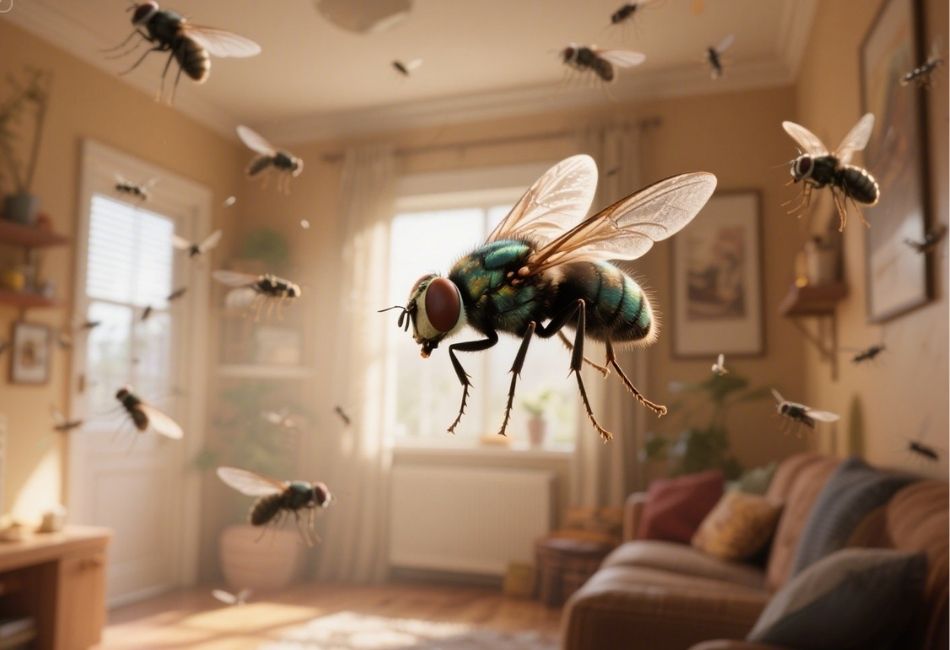Nothing ruins a peaceful afternoon at home quite like the persistent buzzing of large flies circling your living room. If you’ve noticed an uptick in big flies making themselves comfortable in your space, you’re not alone. These unwelcome visitors can be more than just annoying—they can signal underlying issues in your home and pose health risks to your family.
Understanding why large flies are drawn to your house is the first step in addressing the problem effectively. From identifying the specific species you’re dealing with to implementing targeted removal strategies, this guide will help you reclaim your home from these persistent pests.
By the end of this post, you’ll know exactly what’s attracting big flies to your house, how to eliminate them safely, and most importantly, how to prevent them from returning.
Common Types of Big Flies Found in Homes
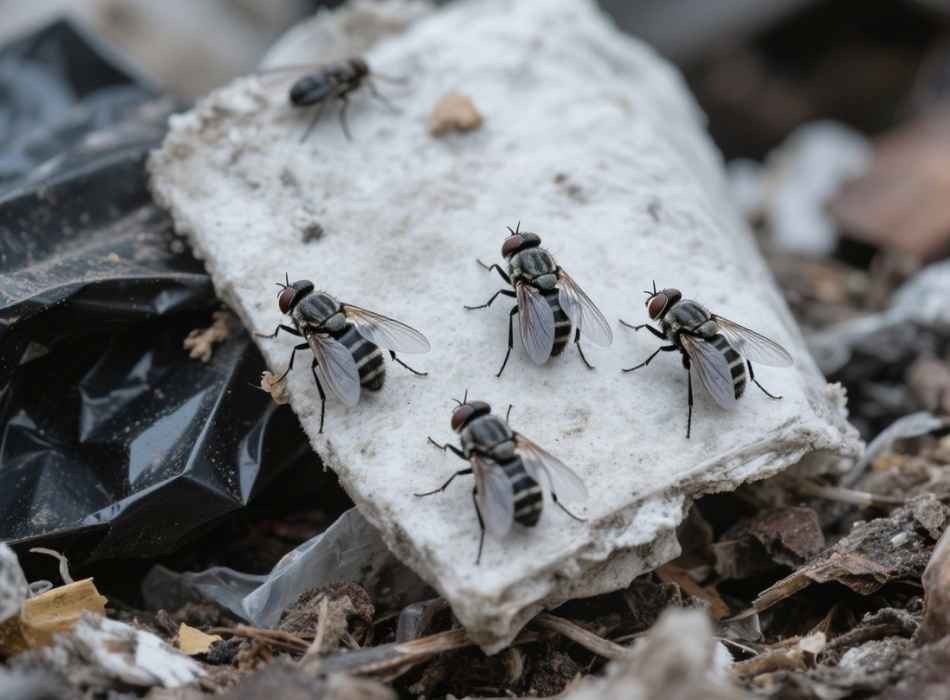
House Flies
The most familiar large fly species, house flies, typically measure about ¼ to ⅜ inch long. These gray-colored insects have four dark stripes on their backs and are drawn to food sources, garbage, and organic waste. House flies can live up to 28 days and reproduce rapidly, making early intervention crucial.
Blow Flies
Also known as bottle flies, these metallic blue or green flies are slightly larger than house flies. They’re particularly attracted to decaying organic matter, including dead animals, spoiled food, and pet waste. Their distinctive shiny appearance makes them easy to identify.
Flesh Flies
Gray flies with distinctive black stripes and flesh flies are similar in size to blow flies but prefer protein sources like meat and dead insects. They often enter homes through small cracks and openings, especially during warmer months.
Cluster Flies
These sluggish flies are larger than house flies and tend to gather in groups, particularly in attics, wall voids, and around windows during fall months as they seek shelter for winter.
What Attracts Big Flies to Your House
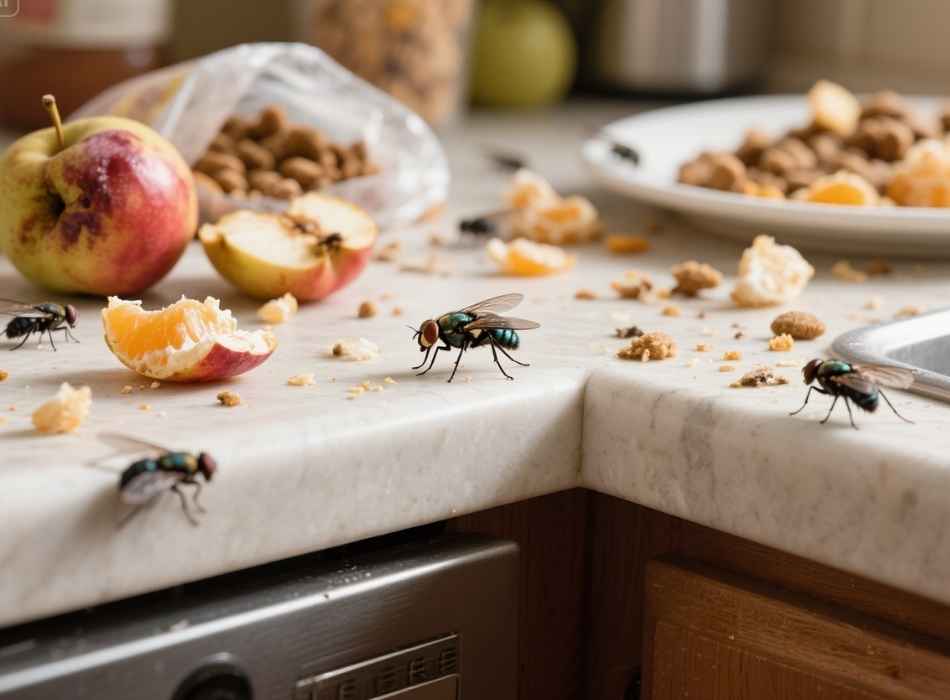
Food Sources and Organic Waste
Flies have an exceptional ability to detect food sources from considerable distances. Overripe fruit left on counters, uncovered pet food, and crumbs around eating areas create an irresistible buffet for these insects. Even small spills that seem insignificant to us can attract flies for days.
Kitchen garbage cans without tight-fitting lids are particularly problematic. The combination of food waste, moisture, and warmth creates ideal breeding conditions. Similarly, compost bins kept too close to the house can draw flies indoors when doors or windows are opened.
Moisture and Humidity
Damp areas in your home provide both drinking water and breeding sites for flies. Leaky pipes under sinks, poorly ventilated bathrooms, and basement moisture issues all contribute to fly problems. Standing water in plant saucers, pet bowls, and clogged drains also attracts these pests.
Entry Points and Structural Issues
Flies don’t need large openings to enter your home. Torn window screens, gaps around doors and windows, and cracks in walls or foundations provide easy access. Even temporarily opened doors can allow multiple flies to enter simultaneously.
Poor weatherstripping around doors and windows not only lets flies in but also allows the scents that attract them to escape, essentially advertising your home as a fly-friendly destination.
Seasonal Factors
Warm weather increases fly activity significantly. During the spring and summer months, flies are more active and reproduce faster, leading to larger populations around your home. Fall brings its challenges as many flying species seek shelter indoors to overwinter.
Sudden temperature changes can also drive flies indoors as they search for more stable environments.
Health Risks Associated with Large Flies
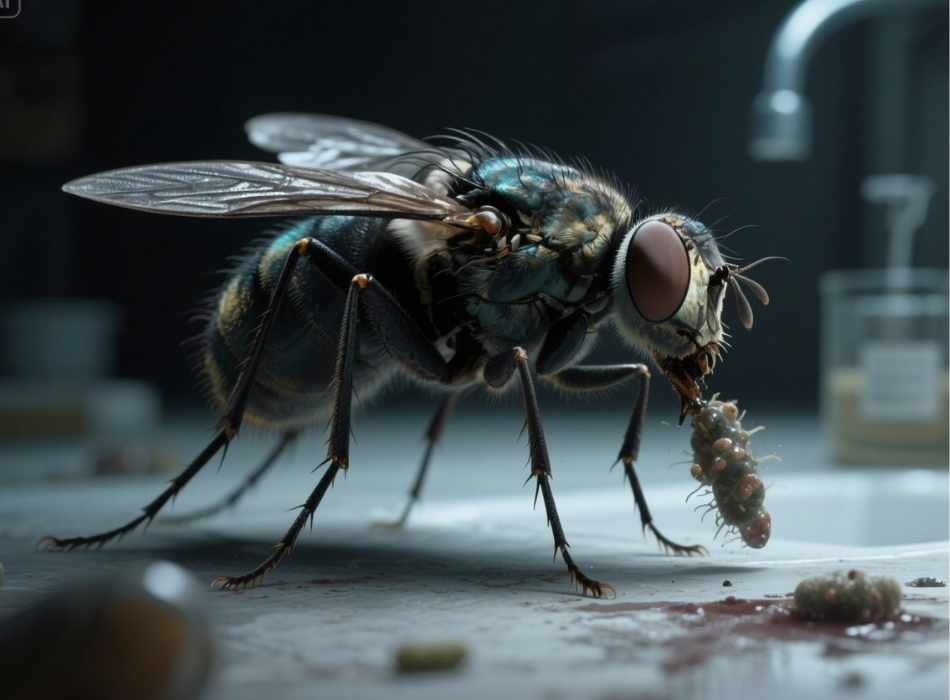
Big flies aren’t just annoying—they can pose genuine health risks to your household. These insects are mechanical vectors, meaning they pick up pathogens from contaminated surfaces and transfer them to clean areas.
Flies commonly carry bacteria like Salmonella, E. coli, and Campylobacter, which can cause food poisoning and gastrointestinal issues. They also transport viruses, parasites, and other microorganisms that can lead to various illnesses.
The risk increases when flies land on food preparation surfaces, eating utensils, or food itself. Their feeding habits involve regurgitating digestive fluids onto food sources, then consuming the liquefied material—a process that spreads contamination.
Children, elderly family members, and individuals with compromised immune systems face higher risks from fly-borne pathogens.
Effective Methods to Eliminate Big Flies
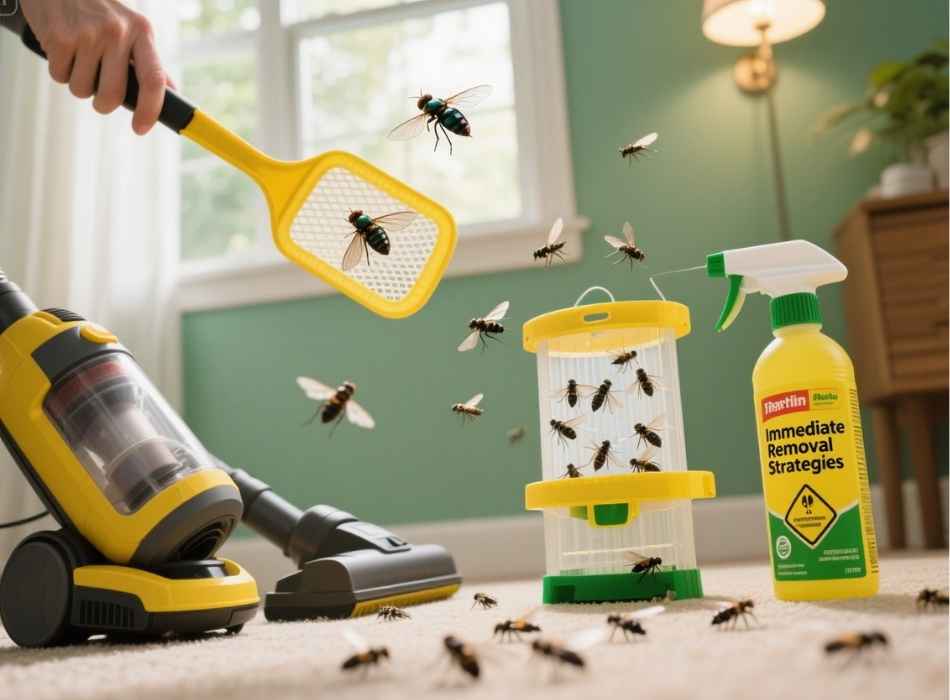
Immediate Removal Strategies
Start by removing adult flies using flyswatters, vacuum cleaners, or fly traps. Sticky traps placed near windows and light sources can capture many flies quickly. For severe infestations, consider using pyrethrin-based sprays, which are derived from chrysanthemum flowers and are relatively safe when used as directed.
Light traps work particularly well for night-flying species. These devices use UV light to attract flies into an electric grid or sticky surface.
Cleaning and Sanitation
Thorough cleaning forms the foundation of any successful fly control program. Clean all surfaces where food is prepared or consumed using hot, soapy water. Pay special attention to areas behind appliances, inside pantries, and around garbage disposal units.
Mop floors with disinfectant, focusing on areas under tables and chairs where food particles accumulate. Empty and clean garbage cans regularly, and consider using cans with tight-fitting lids and liner bags.
Natural Remedies and Deterrents
Several natural approaches can help repel flies without introducing chemicals into your home. Essential oils like peppermint, eucalyptus, and lavender create scents that flies find unpleasant. Mix these oils with water in spray bottles for easy application around entry points.
Apple cider vinegar traps work effectively for many fly species. Fill small bowls with apple cider vinegar and add a drop of dish soap to break surface tension, causing flies to sink when they land.
Fresh herbs like basil, mint, and rosemary planted near windows and doors can provide natural deterrent effects while adding pleasant aromas to your home.
Professional Treatment Options
Persistent infestations may require professional pest control intervention. Exterminators can identify specific fly species, locate breeding sources you might have missed, and apply targeted treatments that provide longer-lasting results.
Professional treatments often include residual insecticides applied to areas where flies rest, comprehensive inspection services to identify entry points, and ongoing monitoring to prevent future problems.
Prevention Strategies for Long-Term Control
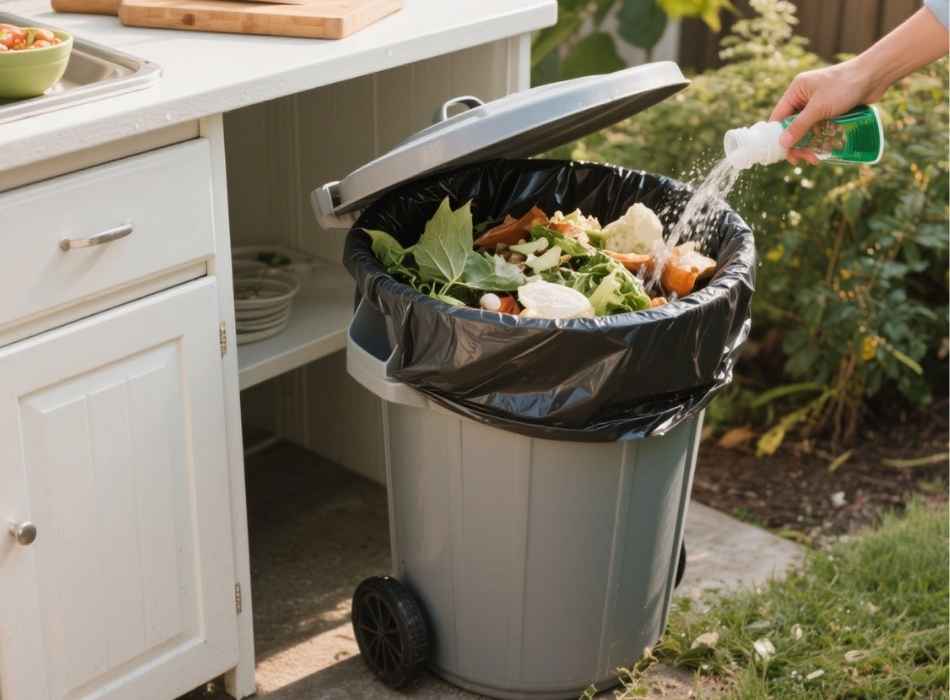
Proper Waste Management
Establish a routine for garbage management that includes daily removal of kitchen waste, especially during warm months. Use garbage cans with tight-fitting lids and clean them regularly with hot water and disinfectant.
Keep outdoor garbage bins as far from the house as possible, and ensure lids remain closed. Consider freezing meat scraps before disposal to reduce odors that attract flies.
Sealing Entry Points
Conduct regular inspections of your home’s exterior, looking for potential entry points. Repair or replace damaged window screens, install door sweeps on exterior doors, and seal cracks around windows and doors with appropriate caulking materials.
Check areas where utilities enter your home, as these often provide overlooked access points for flies.
Maintaining Clean Environments
Regular cleaning schedules help eliminate the food sources and breeding sites that attract flies. Wipe down surfaces daily, sweep floors after meals, and address spills immediately.
Keep pet food in sealed containers and clean pet bowls after each use. Maintain houseplants properly, avoiding overwatering that creates standing water in saucers.
Taking Control of Your Fly Problem
Accessible food sources, moisture, and easy entry points typically draw large flies into your house. By understanding what attracts these pests and implementing comprehensive control measures, you can eliminate current infestations and prevent future problems.
Start with immediate removal of visible flies, then focus on thorough cleaning and elimination of attractants. Seal entry points and establish ongoing prevention practices to maintain a fly-free environment.
Remember that persistence is key—flies reproduce quickly so that consistent efforts will yield the best long-term results. If problems persist despite your efforts, don’t hesitate to consult with pest control professionals who can provide specialized solutions for your specific situation.







